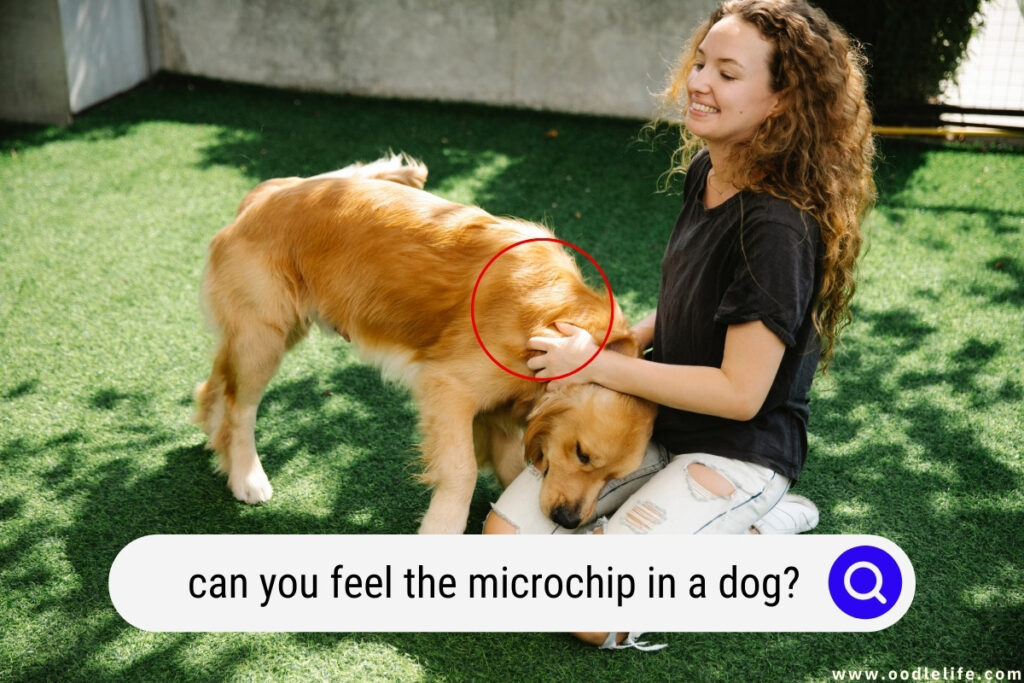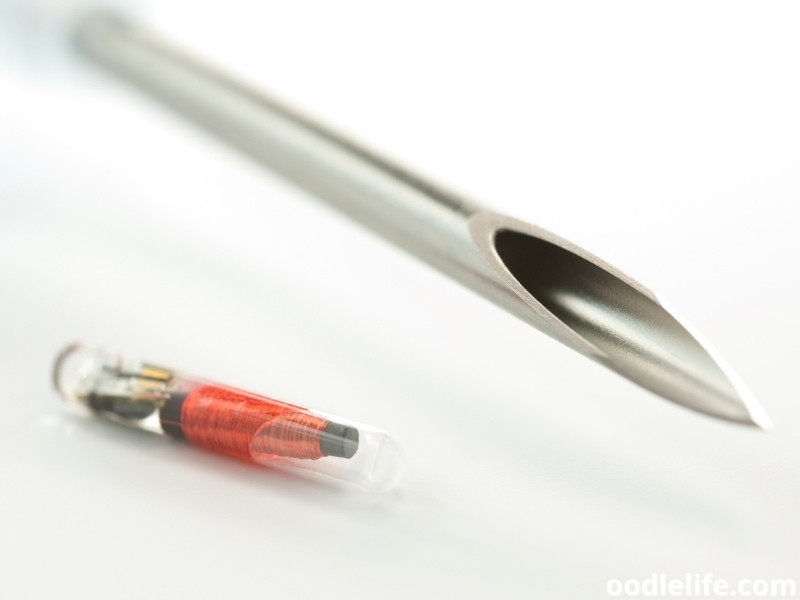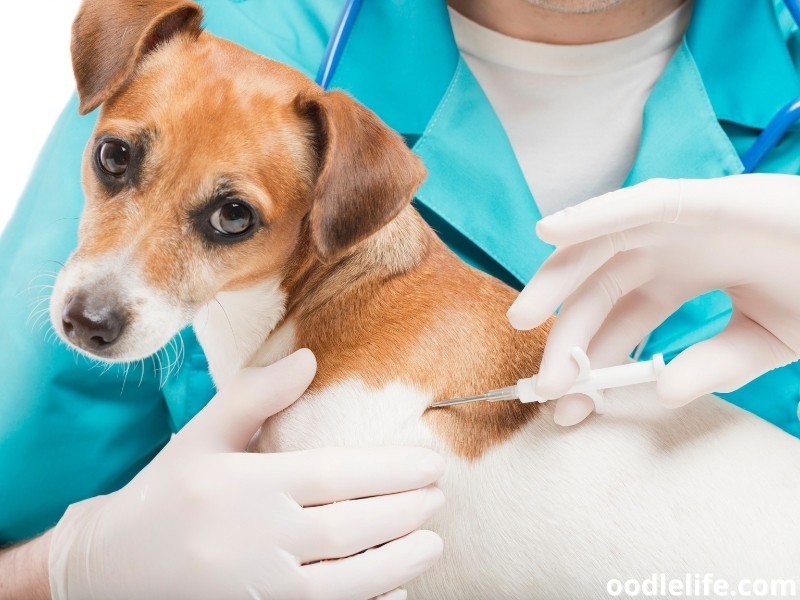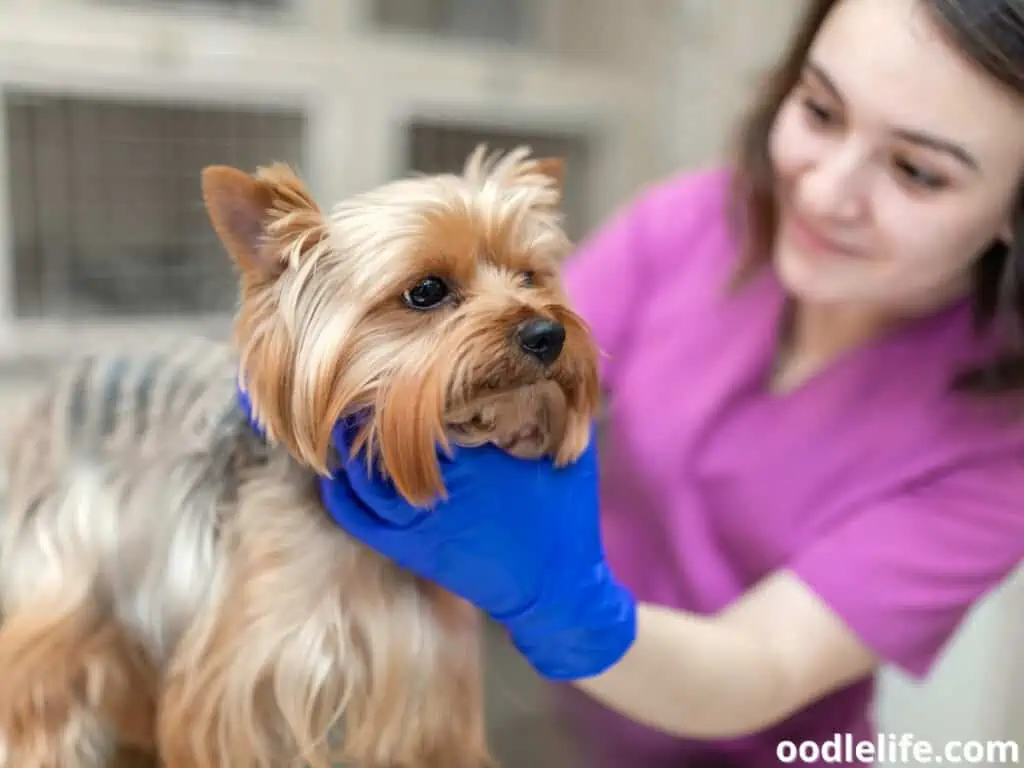Can You Feel the Microchip in a Dog? What Does It Feel Like? (WOW!)
Microchips allow pet owners some peace of mind. I’ve had a dog get off a leash before and dash away, so I know the panic when you can’t find your pet. The experience made me a big fan of microchipping.
If your dog gets lost, vets and animal control facilities can scan for a microchip to help return the dog to you. Having a chip inserted is a quick procedure at your vet’s office. You can even search for microchip numbers online.

Can you feel the microchip in a dog? Can the dog feel it, and will it irritate your pet to have one inserted? Let’s look at the answers to those questions and the many others you probably have about pet microchipping.
So, Can You Feel the Microchip in a Dog?
Yes, sometimes you can feel the microchip in a dog. In some cases, you’ll find a tiny bump about the size of a grain of rice on your dog’s back between its shoulder blades. It might be easier to feel the chip on a small dog like a Yorkie than on a larger breed like a Great Dane or a Poodle with thick, curly fur.
If you can’t feel a bump, that doesn’t mean the microchip isn’t there. It might have shifted slightly or nestled under the skin to make it harder to detect with touch. You can take your dog to the vet and ask them to scan the chip if you’re in doubt.

What Is a Microchip?
A pet microchip is a tiny chip containing identifying information that can help return your lost dog to you. Before you start imagining computer chips like RAM chips or the little circuit boards in an electronic device, let me put you at ease.
When I first heard of pet microchips, I thought of those things and wondered how comfortable it could be to have something that size inserted under the skin. I laughed when I learned that a pet microchip is about the size of a grain of rice, not a circuit board or a snap-in computer chip.
The chip is enclosed in a tiny glass tube and doesn’t have edges or rough areas like I’d pictured. A chip scanner designed to read the chip can pull the unique information and help get your pet home.
A microchip is backup pet identification and doesn’t replace a collar and identifying tags with your information. Only people who have the scanner, like animal professionals, will be able to read the chip.

How Are Microchips Inserted?
You’ve probably watched your vet give your dog an injection before by pinching a flap of loose skin. They perform microchipping the same way. The vet will pull up the skin between your dog’s shoulders and insert the small, tubular device with a syringe and needle.
The vet will then scan the chip to ensure it’s working properly. Microchipping is a quick procedure that takes a few seconds and doesn’t require an anesthetic. It doesn’t hurt your dog any more than a shot might and should give you some added peace of mind knowing that your pet is more protected.
After the vet places the chip, you have to register it with the manufacturer and pay their fee, usually a single payment rather than an ongoing subscription.
The needle is bigger than injection needles, so if you’re concerned your dog might be uncomfortable, you can have them microchipped during other procedures while under anesthetic. If you plan to spay or neuter your dog, you can have the chip inserted then.

Can You Feel the Microchip in a Dog?
Yes, sometimes you can feel the microchip in a dog. You might detect the small, hard glass tube like a tiny bump by touching the skin between its shoulder blades.
In many cases, you won’t be able to feel it because of its placement. Vets place chips in that spot because it’s between the shoulder blades and less likely to shift, because of the loose skin in the area, and because it’s unlikely a dog will be able to scratch at the chip by itself.
If you can’t feel a chip, there could still be one in place in a way that’s hard to detect through touch. The only way to be sure whether a dog has a chip is to have a vet scan it.

Can a Dog Have Side Effects From a Microchip?
Very few dogs have side effects from being microchipped. In rare cases, there could be bleeding at the injection site, temporary hair loss at the site, an abscess, or an infection. Bring any fur or skin changes to your veterinarian’s attention.
In over 4 million microchipped pets in the UK since 1996, only 391 instances of side effects were reported and recorded by the British Small Animal Veterinary Association. Most of those adverse reactions were the chip shifting its position.

Migrating Microchips
When a dog is microchipped, the fat and tissues surrounding the chip bond to it and hold it in place after about a day. But in rare cases, the chip can shift and move away from the injection site.
Even this movement shouldn’t cause problems for your dog. Still, a person scanning can miss the chip if they only scan one specific area instead of moving the scanner to the sides and down the back as the manufacturers recommend.
How Much Does Microchipping Cost?
Generally, the cost of microchipping a dog ranges between $25 and $75, not including the fee to register the chip. Some chain stores like Petco also perform microchipping procedures, usually for less than vets charge. Some Petco stores charge less than $30.

Are There Downsides to Microchipping?
The chip only helps if the person who finds the dog takes it somewhere to scan it. And some organizations don’t scan strays automatically, defeating the chip’s purpose.
This trend is changing with the introduction of universal scanners and chip registries that are shared rather than manufacturer-specific.
Universal scanners made to detect all chips can find a chip in a dog, but it still might not be able to read the data. User error can also cause a poor reading or miss the microchip entirely.
And though it’s rare, sometimes chips don’t work correctly for various reasons.
Nothing replaces a collar with an identifying tag to help your dog get properly identified and returned to you safely. A chip is just an extra layer of protection, but not the main one.

What if My Dog Already Has a Microchip?
In some cases, rescue dogs and adopted pets have microchips from the previous owner. Ask the owner or shelter for the chip ID information if you adopt a dog. This information should allow you to transfer the registry ownership to you.
If you can’t locate the previous owner, try contacting the chip manufacturer for help finding them.

Can I Have My Dog’s Microchip Removed?
If you own the dog, you can ask your vet to remove a microchip, but most vets won’t unless it’s affecting the dog’s health. Removal is a surgical procedure that’s more invasive than having the chip inserted.
If you want to remove it because it’s registered to a previous owner, contacting the chip manufacturer should help you fix the problem without your dog undergoing surgery.
